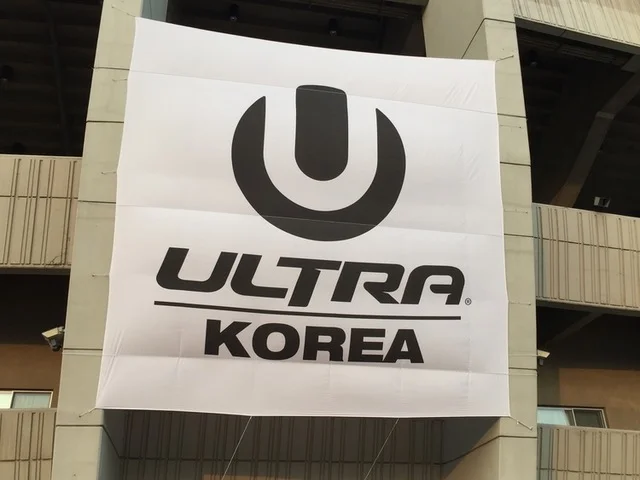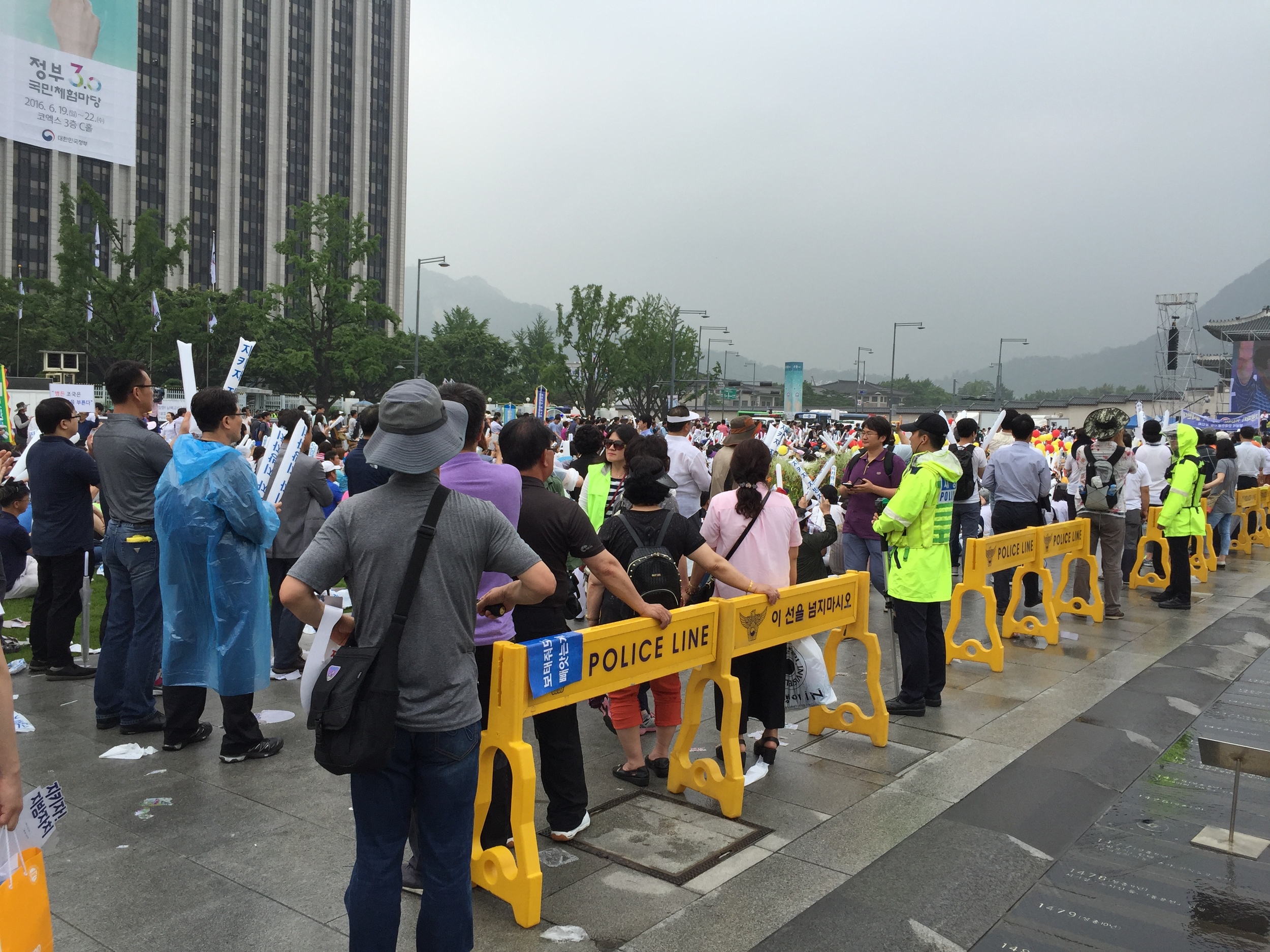Kicking Back in Korea- June, 2016
Our reason for visiting Korea was to attend the Ultra Music Festival which was held in the Olympic Stadium in Seoul. Our son Mike works with his two cousins, Russell and Charlie, in managing the Ultra operations including dealing with artists (DJ’s), partners from other countries and technical and production people. Last year, in Jamaica, we met Don who owns the Ultra Korea franchise and Han who works with him and they invited us to come and see Korea. We combined our Korea trip with three weeks in China and a few days in Hanoi, Vietnam.
We had also planned to visit the “Hermit Kingdom” of North Korea (also known as the DPRK or Democratic People’s Republic of Korea) for a four day tour from Beijing. Before leaving we contacted a tour company in Shenyang, China and arranged for visas and scheduled dates, but it fell apart when we weren’t able to get the flight from Beijing to Pyongyang. Many Americans think it isn’t possible for US citizens to visit DPRK, and they ask why anyone would want to go there. It is possible and curious travelers feel it would be a unique experience to see first hand what the young dictator Kim Jung Un has been up to and what the country looks like. Of course any tour would be sanitized, but it likely would be fascinating. Instead, we settled for a DMZ tour (Demilitarized Zone) from Seoul, which was interesting but probably not as exciting as visiting North Korea. Perhaps another time, but the way the world is going we may not have another chance.
Until this trip, we had neglected South Korea as a destination always thinking it was too westernized and not as exotic as other countries like Japan, China and Thailand. Yes, it is very westernized, at least much of Seoul is, but it has a unique culture and flavor all it’s own and lots to offer a visitor. The people are great, food excellent, a history that goes back 5000 years and it was relatively inexpensive because of the strong dollar.
We were met at Incheon airport by an Ultra driver and taken to the Intercontinental Parnas Hotel on the south side of the Han River. The drive from the airport to the hotel is about 20 miles but it took us more than an hour. It was our first taste of traffic in Seoul, which rivals that of Beijing. Seoul is a city of about ten million and it seems there were at least that many cars and taxis.
Our room was a large suite and the Intercontinental Hotel was high end to say the least. While traveling in China a few weeks earlier we had stayed at some excellent hotels including a Ritz Carlton, Raffles and Grand Hyatt but the Intercontinental in Seoul was the best. While we loved China and the hotels we stayed in there, we did notice some positive differences in a truly “Western” run hotel.
Ultra was lots of fun; electronic music with amazing sound and lights and stage dancers as well, and a crowd of about 50,000 most of whom were young Korean Ultra devotees. Misti and I were treated as honored guests by Don and had VVIP (Very Very Important Persons) status. We spent most of our time watching the show from a VVIP box, meeting and talking with Ultra partners from Japan, Croatia, South Africa, South America and Bali (Ultra is now in 18 countries), chatting with some of the DJ’s and drinking champagne. There were also several dinners for the Ultra “Family” and after shows that went on until 5 AM. I went to one at a nightclub with literally thousands of young Koreans jammed into a small basement area listening to the loudest music known to man and watching music videos; fun for half an hour and then time to come up for air.
Misti and I were clearly the oldest Westerners at the show and we were somewhat of an attraction. Many Koreans, especially younger ones, wanted to meet us, practice their English and have their photos taken with us. We enjoyed being stars for a few nights.
We tried to combine Seoul sightseeing with our Ultra time but it was difficult because we were pretty much exhausted from staying up so late and meeting and talking with so many fun and interesting people. We did manage to see Bukchon Hanok Village, the Korean Contemporary History Museum and the DMZ (Demilitarized Military Zone). We had planned to spend more time in Seoul so we’d have plenty of time to sightsee.
Since Ultra didn’t begin until late afternoon, we decided to take a day tour to visit the DMZ, the biggest tourist attraction in Seoul, popular not only with non-Koreans but with South Koreans as well, since many have relatives in North Korea. The DMZ is the strip of land that divides North and South Korea and is the world’s most heavily fortified border, with armed troops in the north and US and South Korean troops on the south side. The Korean War, often referred to as the “forgotten war,” began in 1950 and an armistice agreement was signed in 1953 at the 38th parallel.
The war is still not officially over and is waiting for “a final peaceful settlement” which has not happened in the past 64 years. Both South and North Koreans would very much like to reunite their country but like another communist country south of the US, Cuba, that likely won’t happen until the current communist dictatorial regimes are replaced.
The tour was worthwhile but no substitute for actually going to the hermit country. In the Imjingak Peace Park we were able to look across the river at North Korea and we went into the tunnels that North Korean commandos dug and used the several times they were planning invasions of the south. To get into the Zone we had to show our passports since we were actually leaving the country of South Korea.
One thing we found fascinating in the DMZ was the Dorasan train station near Imjingak. The station is very modern, built in 2002, but is essentially unused since the border into North Korea has been closed. The signs indicate a train going to Panmunjeom and further north, but at this point that is only wishful thinking. It’s ironic to see this clean modern station, perhaps representing the cleanliness and advancement of South Korea, juxtaposed with the tracks leading to backward North Korea.
Other than the DMZ, our serious Korea sightseeing began when UItra was over. After five nights at the Intercontinental we moved to a Marriott in Namdaemum (means “Great South Gate”) on the other side of Han River, closer to most tourist sites. When we checked out of the Intercontinental we had a pleasant surprise since our room was comped by Ultra; a very big thank you to Don and Ultra.
The Marriott was a brand new hotel that had opened in the past week and as we checked in they told us they were having a drawing for all guests registering. Misti pulled a slip of paper from the “hat” and we won the privilege of using the Executive Lounge, on the top floor, with free food and drinks, for our entire stay.
The hotel is located in the heart of Seoul, surrounded by restaurants and across from the Namdaemum Market, the oldest and largest market in Korea. It’s also close to several museums we wanted to visit; Seoul has more than one hundred museums. We’ve visited museums in many countries all over the world and I have to say Seoul goes right to the top of the pack for outstanding museums, and of course admission is always free. We spent several days visiting three: The National Museum of Korea, the Seoul Museum of History and the War Memorial of Korea.
Perhaps because both Misti and I remember the Korean War, from 1950 to 1953, we were most interested in that phase of Korean history, and both the National Museum of Korea and War Memorial Museum are gold mines of information about the war with photos, films, documents, tanks and planes and even the restored car that the first North Korean dictator, Kim Il-Sung, Kim Jung Un’s grandfather, drove. We spent half a day in each museum soaking up all the history and realizing how horrible that war was with more than three million dead, most of them Chinese and Korean. Seoul was totally destroyed, hard to believe seeing the modern city the way it is now. I highly recommend both museums to anyone visiting Seoul, especially in light of current developments in North and South Korea.
One afternoon, as we exited the National Museum of Korea, we saw hundreds of police, maybe thousands, in riot gear on the streets and in buses. There were perhaps tens of thousands of Koreans sitting on a mall chanting something in Korean that we couldn’t understand and waving flags and banners. I asked an English speaker what they were chanting and apparently it was a union labor demonstration. The size and volume of the demonstration was awesome and unlike anything you would see in the US, and I remembered that Korea is known for having frequent and outsized protests and demonstrations. It was quite memorable and we were in the middle of it.
We had wanted to see more of Korea outside of Seoul but were running short of time. Don told us about Jeju Island, sort of a Korean Hawaii, set on an island south of the mainland and about an hour by air. It’s popular not only with Koreans but Japanese and Chinese as well.
We took the short flight out of Gimpo, Seoul’s domestic airport, which was a challenge since few of the signs or announcements were in English, but it wasn’t a problem. We rented a car which had navigation, but both the map and voice were in Korean, so we did lots of stopping and asking directions, another challenge since there were few English speakers, but that just added to the adventure and some of the signage was in the roman alphabet.
We drove an hour to Seogwipo on the south side of the island and stayed two nights in a hotel overlooking the East China Sea. We spent our time exploring the island with its volcanic formations, walking the Olle trail along the sea, stopping at seafood markets, driving up Korea’s highest mountain and just relaxing after hectic sightseeing in Seoul.
After Jeju we returned to Seoul to catch our flight home.
Our trip to South Korea gave us a new awareness and understanding of the importance of this small but powerful country in current world affairs. We came to realize the anxiety South Koreans must have knowing they are living next door to a madman who possesses one of the largest armies in the world, a nuclear arsenal and who seems determined to force his will on his southern neighbor. The US maintains a large military force on the DMZ and now is installing an anti-missile system (THAAD), over the objections of China, who feels the US is intruding in “their” part of the world. Lots of sabre rattling which hopefully will not be the flashpoint for real military action. Scary times in that part of the world.
Art Faibisch
March 19, 2017
































































































